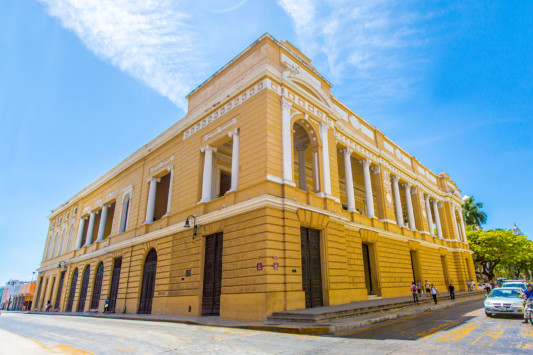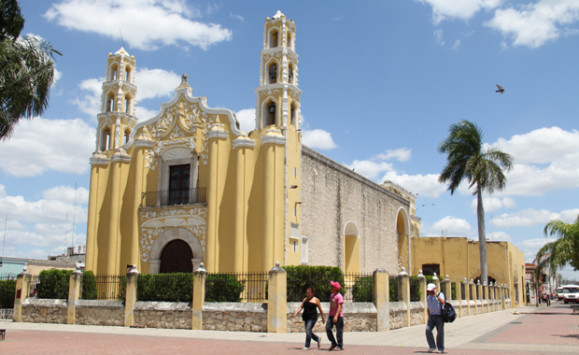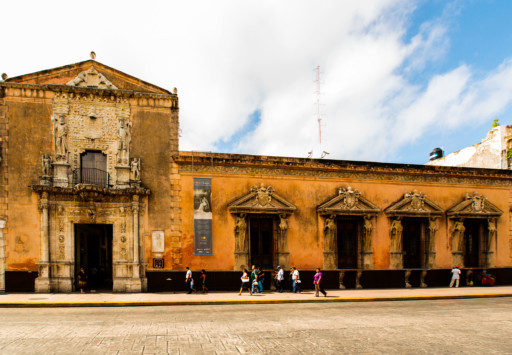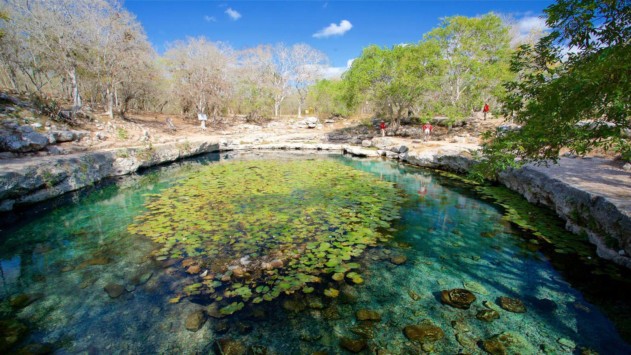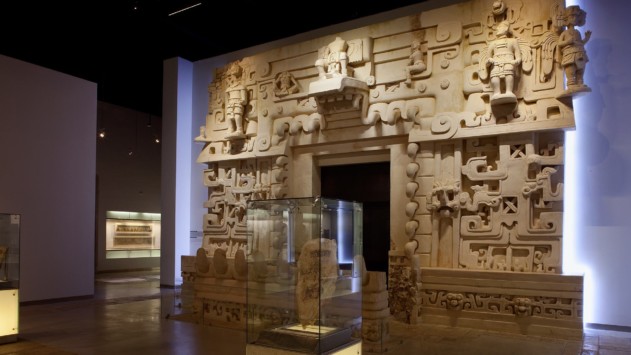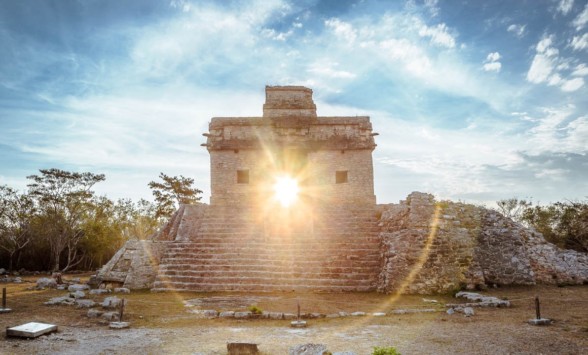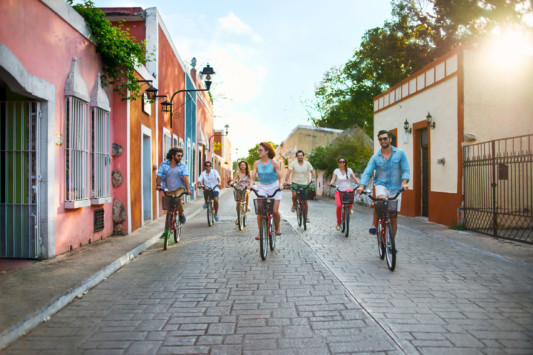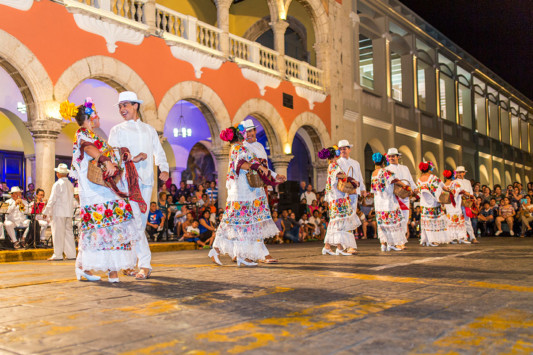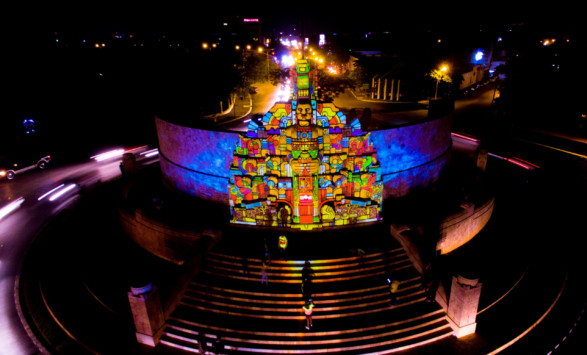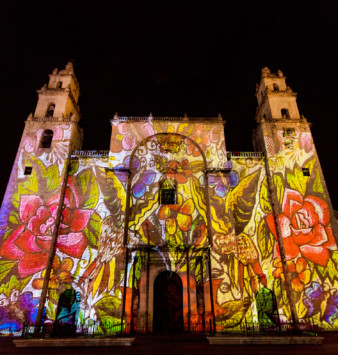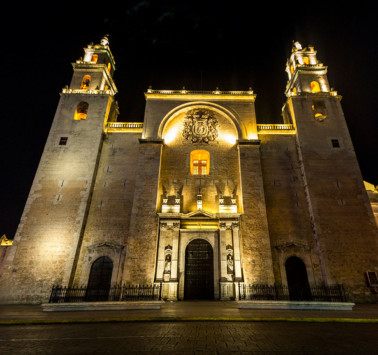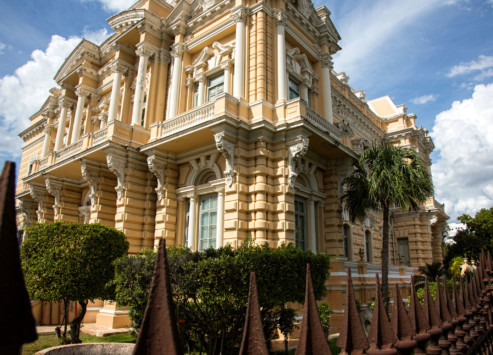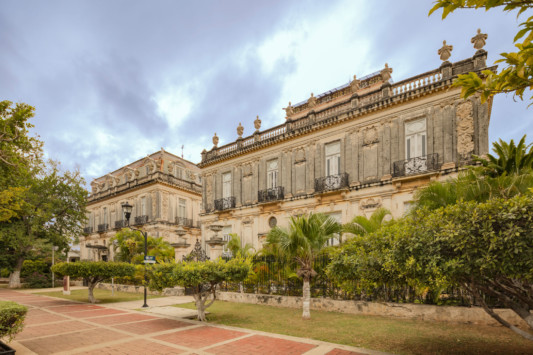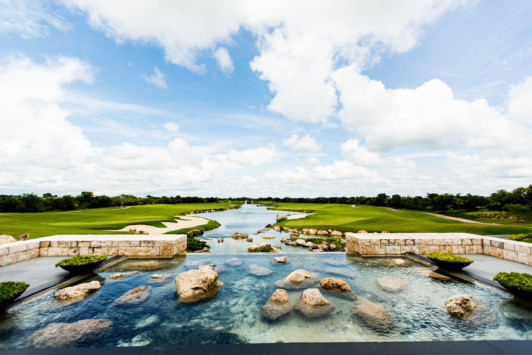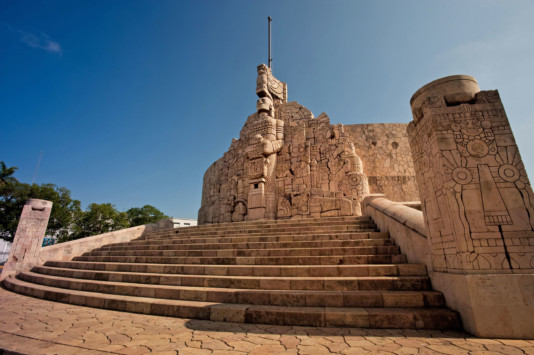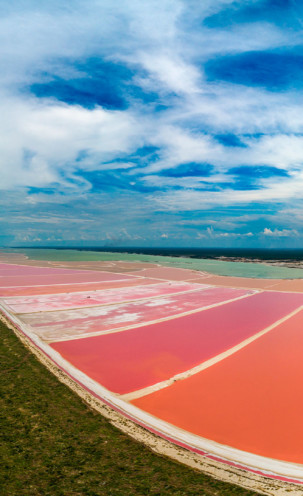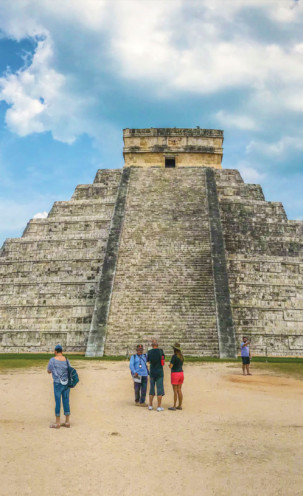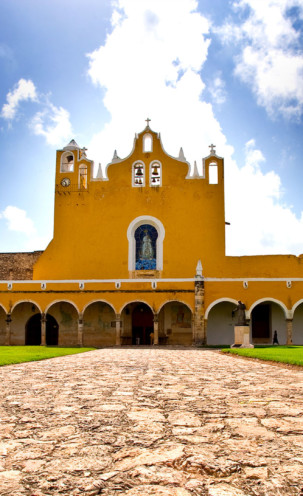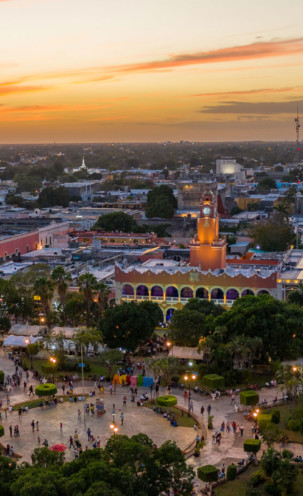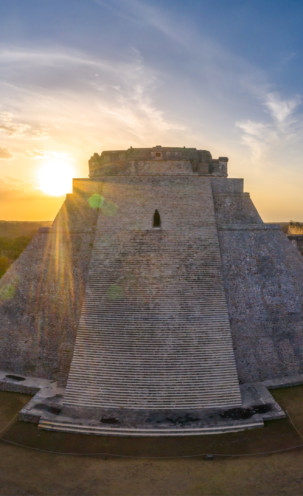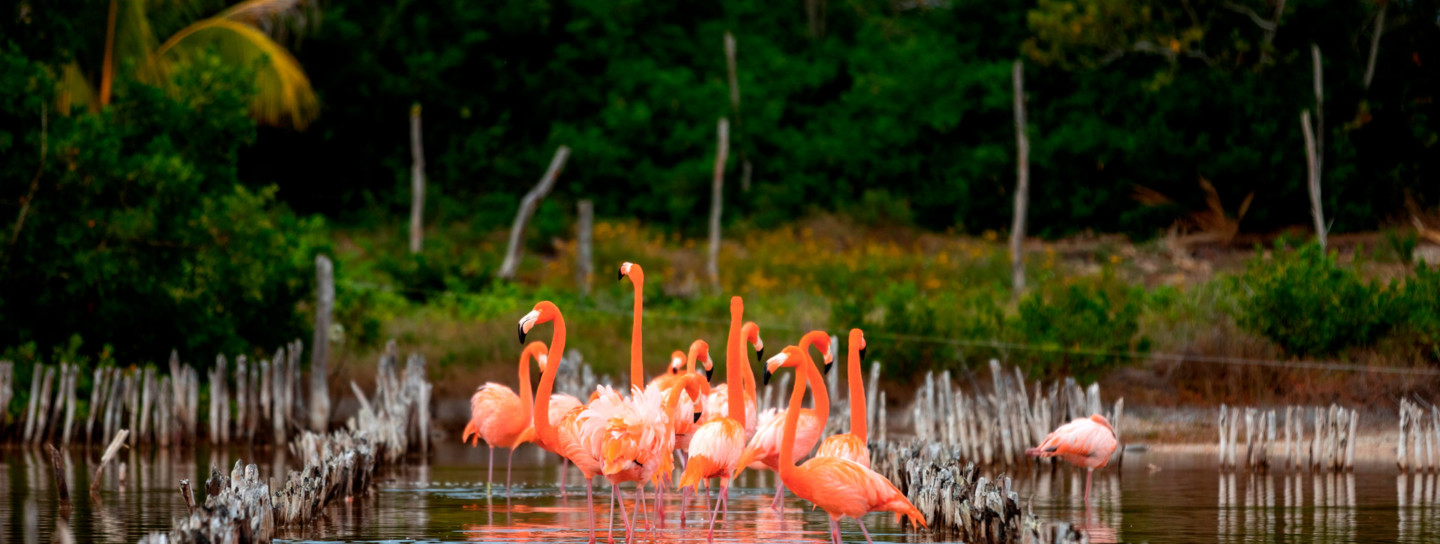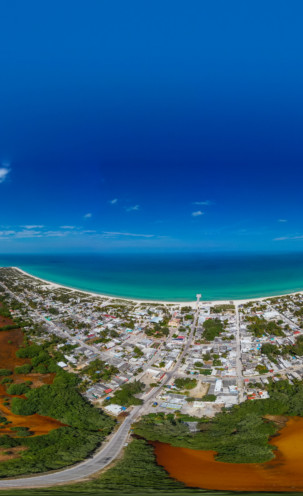
Cultural and gastronomic capital of the south
The right place to start exploring the roads of the Mayab
The capital of Yucatán is the best place to start your tour and to explore the state. Founded in 1542 and built on the ancient Mayan city of T'ho, it stands out for its wide offer of cultural and artistic attractions, its colonial historic downtown with European architectural influence and an outstanding French style that we can admire in the large houses of Paseo de Montejo, the most important avenue of the city. It was recently awarded as "Best small city in the world" and "Best convention venue" by specialized tourism media.
The city is the most important distribution center for cultural tourism in the Yucatán Peninsula: offering more than 5,919 rooms in hotels for all budgets, congress and exhibition venues, more than 300 restaurants of all kinds of cuisine and, a wide range of cultural and tourist attractions.
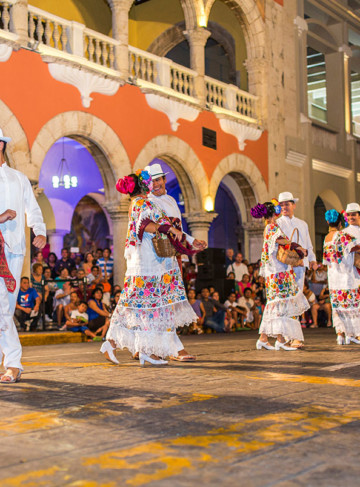 Centro de Mérida
Centro de Mérida It offers you varied options of culture, history, entertainment and its delectable gastronomy. Therefore, we suggest you start your visit in the historic downtown of the city, where you can stroll around and admire a great variety of colonial buildings, museums, galleries, theaters, outdoor cafés, bars, typical clothes, parks, hotels, restaurants with national and international cuisine.
The Historic Downtown is an ideal place to enjoy numerous activities of entertainment and nightlife every single day.
Cosmopolitan Mérida
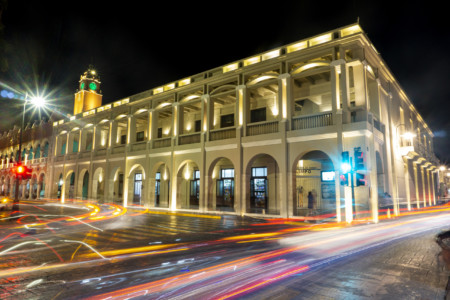 Centro Cultural Olimpo, Mérida
Centro Cultural Olimpo, MéridaAll this ancestral tradition coexists day after day with a modern, diverse and avant-garde city, where connectivity, mobility, services, efficiency, multiculturalism and good practices set us as a reference of quality of life in the world.
We have modern buildings, two convention venues, museums, an international airport, restaurants, golf courses, hotels, a vibrant nightlife and a first-class infrastructure.
Gastronomy
The local gastronomy stands out for its taste and tradition. With a selection of more than 280 restaurants, Mérida is able to satisfy even the most demanding tastes. We can find all sorts of restaurants or markets, from traditional to high cuisine, where they use ancient Mayan techniques, endemic ingredients and a unique technique for baking and cooking with a system of burial of clay pots with dry wood that provides unique aromas and flavors.
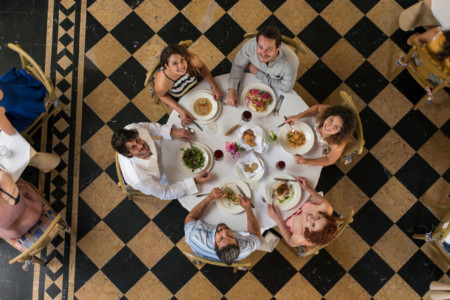 Hacienda Xcanatún, Mérida
Hacienda Xcanatún, MéridaMain destinations
Barrio de La Mejorada
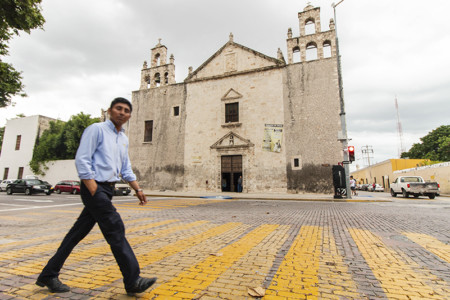 Barrio de La Mejorada
Barrio de La MejoradaLa Mejorada "barrio" (neighborhood), has a seventeenth-century church, which served throughout its history as a hospital, women's prison and barracks. This church is currently the Faculty of Architecture of the Autonomous University of Yucatán. Here you can also find the park of La Mejorada that is an essential part of the city of Mérida, where the first railroad in the Peninsula was built in 1870.
In this old neighborhood we can visit the Museum of Popular Art in the Casa Molina, the Museum of the Yucatecan Song, the historical "Arco de Dragones", "Arco del Puente", Yucatán Children's Cultural Center and, the Museum of the Railroad.
Barrio de San Cristóbal
In the beautiful neighborhood of San Cristóbal, the City Museum is a cultural element of great importance to the city of Mérida, both for its architectural features and for its historical value. There, you can find the former Federal Post Office, the Lucas de Galvez Market, the San Benito Market, the Craft Market, and the Garcia Rejón Bazaar.
The beauteous Church of San Cristóbal, with the advocacy to the Virgin of Guadalupe, is home of pilgrimages and processions every December 12th.
Barrio de San Sebastián
It is one of the oldest and most traditional "barrios" in Mérida. In ancient times, it used to be a little Mayan village settled southwest of Mérida, and changed its name by the time of the colonization to San Sebastián.
Some people think Montejo's troops passed through it when they came to T'ho. In this traditional neighborhood we find the Ermita de Santa Isabel which dates from the 17th century; it was formerly called the Ermita de Nuestra Señora del Buen Viaje, possibly because of its location near the royal path of Campeche.
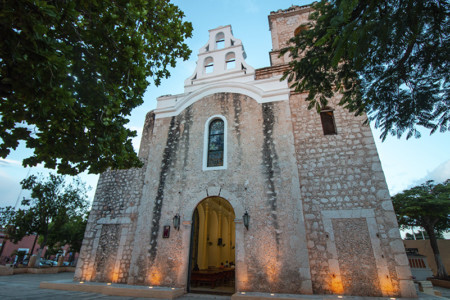 Barrio de San Sebastián
Barrio de San SebastiánBarrio de Santiago
As a result of the henequen bonanza that the region experienced towards the end of the 19th century, a group of Yucatecan potentates decided to start a project to build a public promenade "worthy of the city of Mérida" and to modernize the capital by the end of the 19th century.
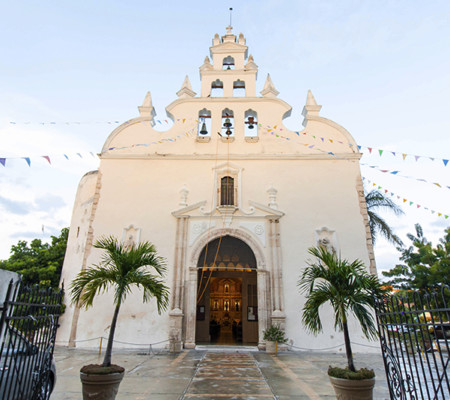 Barrio de Santiago
Barrio de SantiagoThe now known as Paseo de Montejo, built between 1886 and 1905, was inspired by the Champs-Elysées in Paris and named after the founder of the city of Mérida, Francisco de Montejo y León, "El Mozo".
In this beautiful avenue you can find some of the most renowned historical monuments of the city such as the Twin Houses or Chamber Houses, the grandiose Canton Palace, the Minaret Pawn House, the Regil Pawn House, the Quinta Montes Molina, the monuments to Justo Sierra and Felipe Carrillo Puerto and, the famous Monument to the Fatherland that is one of the most important symbols of the city, made by the Colombian master Rómulo Rozo.
Must-sees
Peón Contreras Theater
The oldest and most beautiful theater in Mérida is named after José Peón Contreras, an immortal novelist poet, playwright, essayist, doctor and politician from Yucatán, who was born in this city in 1843 and died in Mexico City in 1907.
Inspired by the French neoclassical style, this theater was inaugurated on December 21, 1908. The original project was commissioned to the architect Pio Piacentini, the technical direction was carried out by the architect Enrico Desserti, the sketch and painting of the dome is by Nicolás Allegretti and the façade of the building with a marked European style is the work of Fernando Ceicola. In December 2008 the theatre celebrated its 100th anniversary.
Its distribution and façade reminisce the great European theatres of the time. From the center of the dome hangs a chandelier which arms have prisms made of iridescent cut glass.
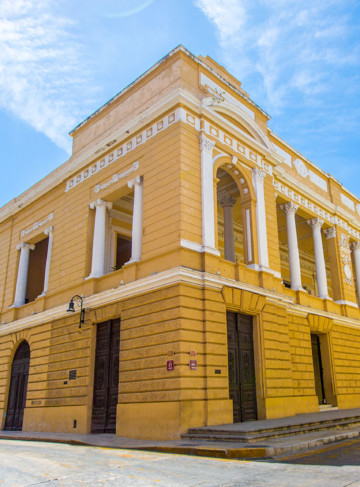 Teatro Peón Contreras
Teatro Peón ContrerasThe scenic arch presents lateral columns of Corinthian order, with the adjustments required by the construction systems and materials of the region considering that many of them were imported. It is opulently decorated, majestic and majorly spacious inside.
Great Museum of the Mayan World
The Great Museum of the Mayan World is a modern and avant-garde cultural space considered one of the most important in Latin America. It has four permanent rooms that exhibit more than 1000 important archaeological pieces of the Mayan culture.
The architectural conceptualization of the building is based on one of the key elements to understand the mysticism of the Mayan people: the ceiba tree. The main building resembles the ceiba tree which represents the sacred tree of life for the Mayans. Based on this concept, an architectural design is developed including a parking lot, transit warehouses, main reception room, permanent exhibition rooms, temporary exhibition room, multi-purpose room, children's playground, film projection room with a Mayamax screen, terraces and gardens.
The museum exhibits a magnificent collection of more than 1,160 pieces for you to enjoy representative pieces such as textiles, religious objects and diverse objects that reflect the current daily life of the Mayans; engravings, books and historical documents, artistic and religious works from the viceroyalty period; pre-Hispanic era collections that include stelae, bas-reliefs and stone sculptures; pottery vessels, trousseaus and ceramic offerings, in addition to decorations and sumptuary objects made of gold, jade and shell.
The four permanent exhibition halls of the Great Museum of the Mayan World have a high thematic content to display the archaeology, anthropology, ethnology, history and customs of the Mayan world in the region.
Montejo House Museum
The Casa de Montejo, built between 1542 and 1549 commanded by Don Francisco de Montejo, conqueror of the Yucatán Peninsula, is one of the scant examples on the American continent of civil constructions in the Renaissance style known as Plateresque. It preserves the 16th century facade, being a representative masterpiece of that artistic style. It is one of the five Casas Señoriales Banamex, offered to the public by the Banco Nacional de México. These houses are historical-cultural spaces which purpose is to contribute to the cultural, social, ecological and educational development of our country.
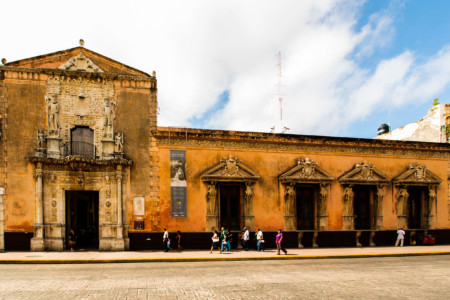 Museo Casa Montejo
Museo Casa MontejoThe Museo Casa Montejo has four permanent rooms as a site museum: the studio/library, the living room, the bedroom and the dining room, all set in the style of the last quarter of the 19th century and the first quarter of the 20th century in Mexico. It also has three temporary exhibition halls where temporary exhibitions will be presented to allow artistic appreciation, as well as a program of conferences, concerts and the work of the Great Masters of Popular Art.
Dzibilchaltún
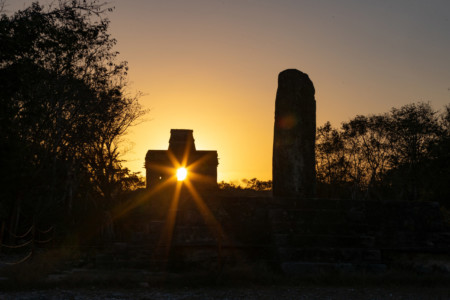 El templo de las 7 muñecas, Dzibilchaltún
El templo de las 7 muñecas, DzibilchaltúnConsidered one of the oldest Mayan cities, it stands for "the place where there is writing on flat stones". Dzibilchaltún amalgamates in one place a pre-Hispanic city, an eco-archaeological park and the Museum of the Mayan People, which houses Mayan and Spanish remains, from clay objects to paintings, Spanish armor and weapons, several Mayan stelae, stones and carved lintels in excellent condition.
Dzibilchaltún also has a 16th century Franciscan chapel, which is located right in the center of the Mayan city.
Dzibilchaltún is located on kilometer 14 of the Mérida-Progreso highway. It can be visited every day from 8:00 to 17:00 hrs.
The city preserves 12 sacbés (sak bé oob) or white roads, most of which start from the center and go toward the constructions on the outskirts. One of them leads to the Xlacah cenote, which in Mayan means "old town", one of the largest and deepest found in Yucatán thus far, and from which a great number of archaeological pieces have been rescued, mainly pottery.
Xlacah is a kind of natural outdoor pond and is easily accessible, since it is at ground level. Its crystalline waters, covered with lilies floating on the surface, enhance their beauty as the sunlight goes through them, thus being eternal witnesses of the greatness of this place.
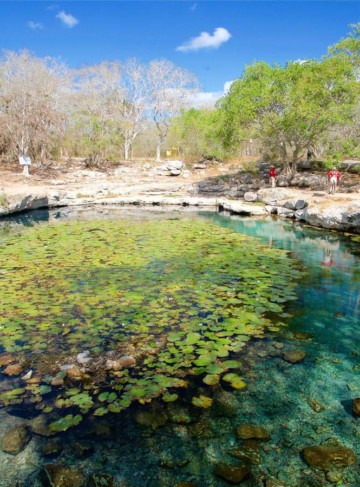 Cenote Xlacah
Cenote Xlacah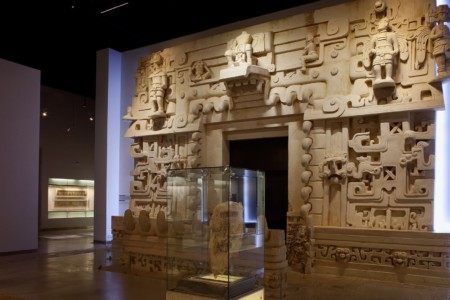 Museo del Pueblo Maya
Museo del Pueblo MayaThe Museum of the Mayan People is made up of 4 exhibition halls:
The Pergola of the Monoliths: where pre-Hispanic monolithic sculptures from Yucatán, Campeche and Quintana Roo are exhibited at the edge of a path that runs through a garden of native plants.
The Room of Mayan Archaeology: dedicated to the pre-Hispanic era, it exhibits a collection of ceramic,
and architectural elements from Chiapas, Campeche and the Yucatán itself, arranged in such a way as to illustrate themes such as the Mayan concept of the universe, the emergence of man, the relationship between man and nature, the gods, social stratification, painting, writing, specialization of work and the tracking of time.
The History Room: where a special space is dedicated to the Archaeology of Dzibilchaltún, the Contact and Conquest of the Mayan People and the formation of the Yucatecan identity.
The Solar Maya: an annexed area where a typical Mayan rural house was built, made using traditional techniques, materials and labor.
Named after an offering that was found inside of seven clay figures in human form.
The archaeo-astronomical phenomenon of the equinox occurs in Dzibilchaltún, on March 21st and on September 21st. At dawn, when the door of the Temple of the Seven Dolls is illuminated by the sun glare that comes from the horizon, at a certain moment, the celestial sphere is in the center of the door and creates an amazing display of light and shadow on the western façade.
These days, you can observe the incredible precision of Mayan astronomy integrated into its architecture. The Mayans used the sun as the basis for planning their lives because they lived from the agriculture. During the spring equinox they started the sowing and in the autumn equinox they did the harvest.
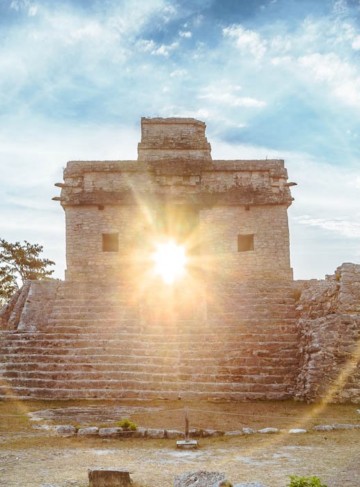 Equinoccio Dzibilchaltun
Equinoccio DzibilchaltunGallery
